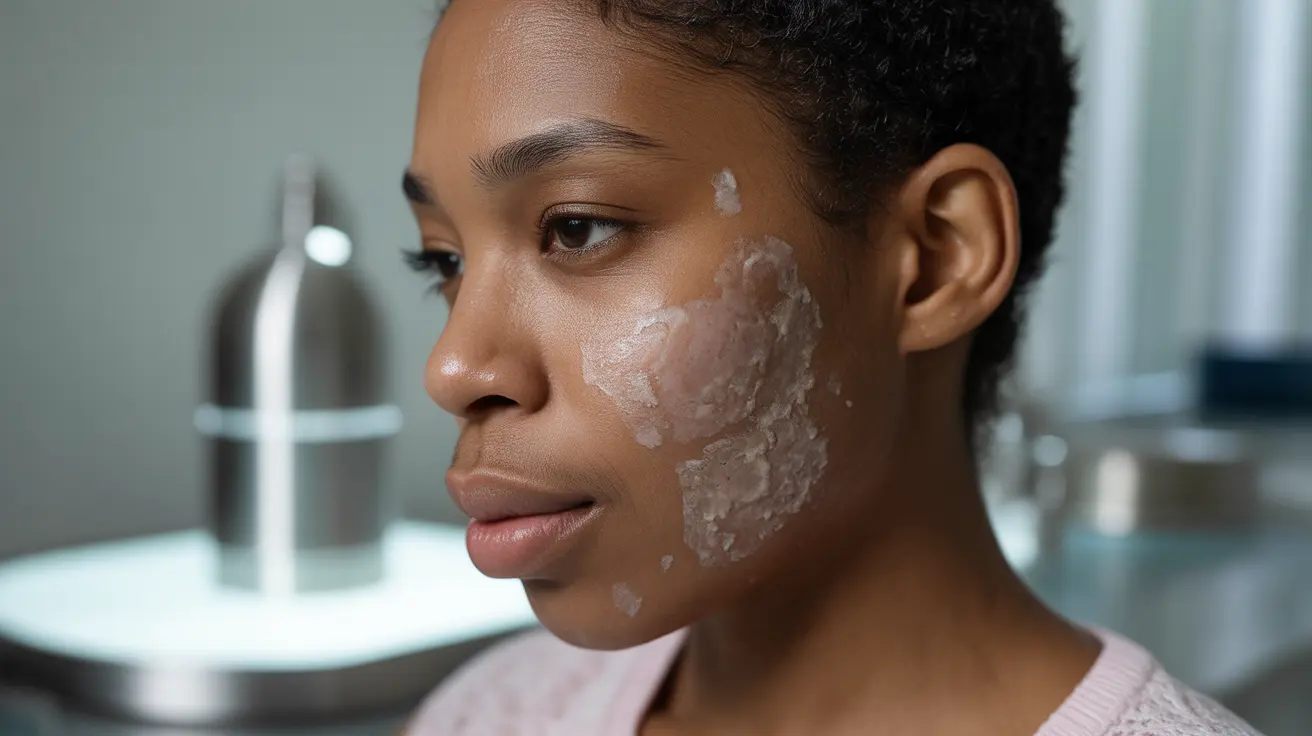Seborrheic dermatitis affects people of all skin tones differently, and understanding its unique presentation and management in Black individuals is crucial for proper diagnosis and treatment. This common inflammatory skin condition can be particularly challenging to identify and treat in darker skin tones, requiring specific attention to symptoms and care approaches.
For Black individuals, seborrheic dermatitis can present distinct challenges, from diagnosis to treatment selection. Understanding these differences is essential for effective management and preventing potential complications.
How Seborrheic Dermatitis Manifests in Black Skin
In Black skin, seborrheic dermatitis often appears differently than in lighter skin tones. Instead of the typical reddish patches seen in lighter skin, the condition may present as:
- Lighter or darker patches on affected areas
- Gray or white scales
- Subtle inflammation that might be harder to detect
- Areas of skin that appear lighter or darker than the surrounding skin
These differences in appearance can sometimes lead to delayed diagnosis or misdiagnosis, making it crucial for healthcare providers to be familiar with how the condition presents in darker skin tones.
Common Areas Affected and Symptoms
Seborrheic dermatitis commonly affects specific areas in Black individuals, including:
- Scalp (particularly challenging with various hairstyles and hair care practices)
- Eyebrows and around the nose
- Behind the ears
- Center of the chest
- Upper back
Unique Challenges in Black Hair Care
The relationship between seborrheic dermatitis and Black hair care presents unique considerations. Protective styles, natural hair care routines, and various hair products can all impact how the condition manifests and responds to treatment.
Effective Treatment Approaches
Treatment for seborrheic dermatitis in Black individuals should be tailored to address both the condition and specific hair and skin care needs. Key treatment options include:
- Medicated shampoos containing ketoconazole, selenium sulfide, or zinc pyrithione
- Topical antifungal medications
- Anti-inflammatory treatments
- Moisturizing products specifically formulated for Black skin and hair
Natural and Alternative Solutions
Many Black individuals seek natural alternatives that won't disrupt their hair care routines. Effective options may include:
- Tea tree oil-based products
- Apple cider vinegar rinses
- Natural oils like coconut oil or jojoba oil
- Aloe vera preparations
Prevention and Management Strategies
Managing seborrheic dermatitis in Black skin requires a balanced approach that considers both treatment and prevention:
- Regular but gentle cleansing
- Careful product selection
- Moisture management
- Stress reduction techniques
- Balanced diet and adequate hydration
Frequently Asked Questions
How does seborrheic dermatitis appear differently on Black skin compared to lighter skin tones? In Black skin, seborrheic dermatitis typically appears as lighter or darker patches rather than the reddish areas seen in lighter skin. It may also present with gray or white scales and more subtle signs of inflammation.
What are the most effective treatments for seborrheic dermatitis in Black people, especially regarding scalp care? The most effective treatments include medicated shampoos containing ketoconazole or selenium sulfide, combined with gentle moisturizing products specifically formulated for Black hair and scalp care. Regular cleansing and maintaining a proper moisture balance are crucial.
Why is seborrheic dermatitis often misdiagnosed in Black and Brown individuals? Misdiagnosis often occurs because the condition presents differently in darker skin tones, with inflammation being less obvious and redness less visible. Healthcare providers may not be familiar with these variations in appearance.
What skincare and haircare tips can help manage seborrheic dermatitis in Black women without causing dryness or irritation? Regular but gentle cleansing, using appropriate moisturizers, selecting products free from harsh chemicals, and maintaining protective hairstyles that don't cause tension or irritation are essential. Natural alternatives and proper hair care techniques can help manage symptoms while maintaining healthy hair.
Can seborrheic dermatitis cause dark or light patches on the skin in people with darker skin tones? Yes, seborrheic dermatitis can cause both hyperpigmentation (darker patches) and hypopigmentation (lighter patches) in people with darker skin tones. These changes may persist even after the condition clears and may require additional treatment.




